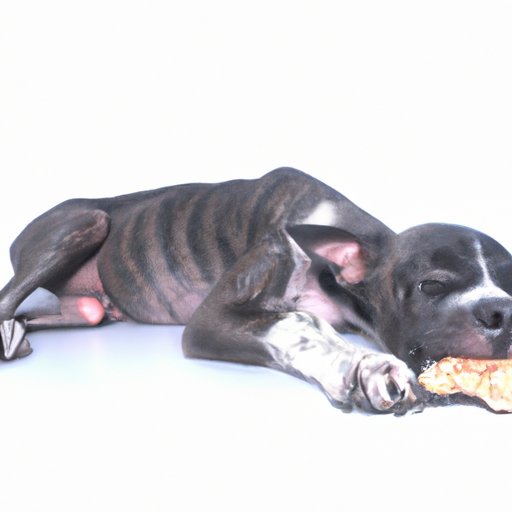
Introduction
As a dog owner, it can be concerning to see your furry friend losing weight and looking skinny. Not only can it be a sign of underlying health issues, but it can also affect your dog’s quality of life. Fortunately, there are several ways to help your dog gain healthy weight and muscle mass. In this article, we will explore some of the most effective ways to fatten up a dog while keeping them healthy and happy.
Nutritional Changes
The first step in helping your dog gain weight is to ensure they are getting a balanced and nutritious diet. Switching to a higher-calorie dog food can be a good place to start. Look for foods that contain more protein and fat and fewer fillers. You can also add supplements to their diet, such as oils or proteins, to increase their calorie intake. Some high-calorie foods that can be added to your dog’s regular meals include cooked chicken, turkey, beef, and salmon, as well as eggs, cottage cheese, and yogurt.
Exercise Modifications
While it may seem counterintuitive, exercise is crucial for an underweight dog’s health and wellbeing. Regular low-impact exercises, such as short walks or light playtime, can increase their appetite and help build muscle mass. Be sure to consult your veterinarian to determine an appropriate exercise routine for your dog’s size, breed and health condition.
Treats and Snacks
Snacks and treats are an excellent way to increase your dog’s calorie intake. High-calorie snack options include peanut butter, cheese, and canned dog food. While treats are essential, it is crucial to keep them in moderation to avoid overfeeding and an upset stomach. Instead of giving high-fat or sugary snacks, try to find healthier alternatives, like carrots, broccoli and sweet potatoes.
Medical Issues
If your dog is not responding to changes in their diet and exercise routine or is experiencing other symptoms, there may be underlying medical issues causing them to lose weight. Health issues, like digestive problems, worms, or cancer are just some examples of health problems that can disrupt their weight gain. It is necessary to contact a veterinarian to run specific tests and provide a course of treatment.
Mealtime Strategies
The way you feed your dog can also impact their weight gain. Frequent, small meals throughout the day can help them eat more, as well as increasing the calorie intake without putting a strain on their stomach. You can also use feeding tools to make mealtimes more comfortable for underweight dogs, such as slow feeders or raised feeding bowls.
Behavioral Changes
Weight loss can sometimes be a result of behavioral or environmental factors, such as anxiety or stress. It is important to address these issues to help your dog feel more secure and happy, contributing positively to their weight gain. Taking walks or engaging in calming activities such as massages, and giving your dog ample time for playtime can help your dog remain stress-free and result in weight gain over time.
Conclusion
In conclusion, Fattening up a dog takes patience and consistency. By following the steps discussed in this article, you can help your dog reach and maintain a healthy weight while also improving their overall quality of life. Remember always to consult a veterinarian when making any significant changes in their diet or activity level.




